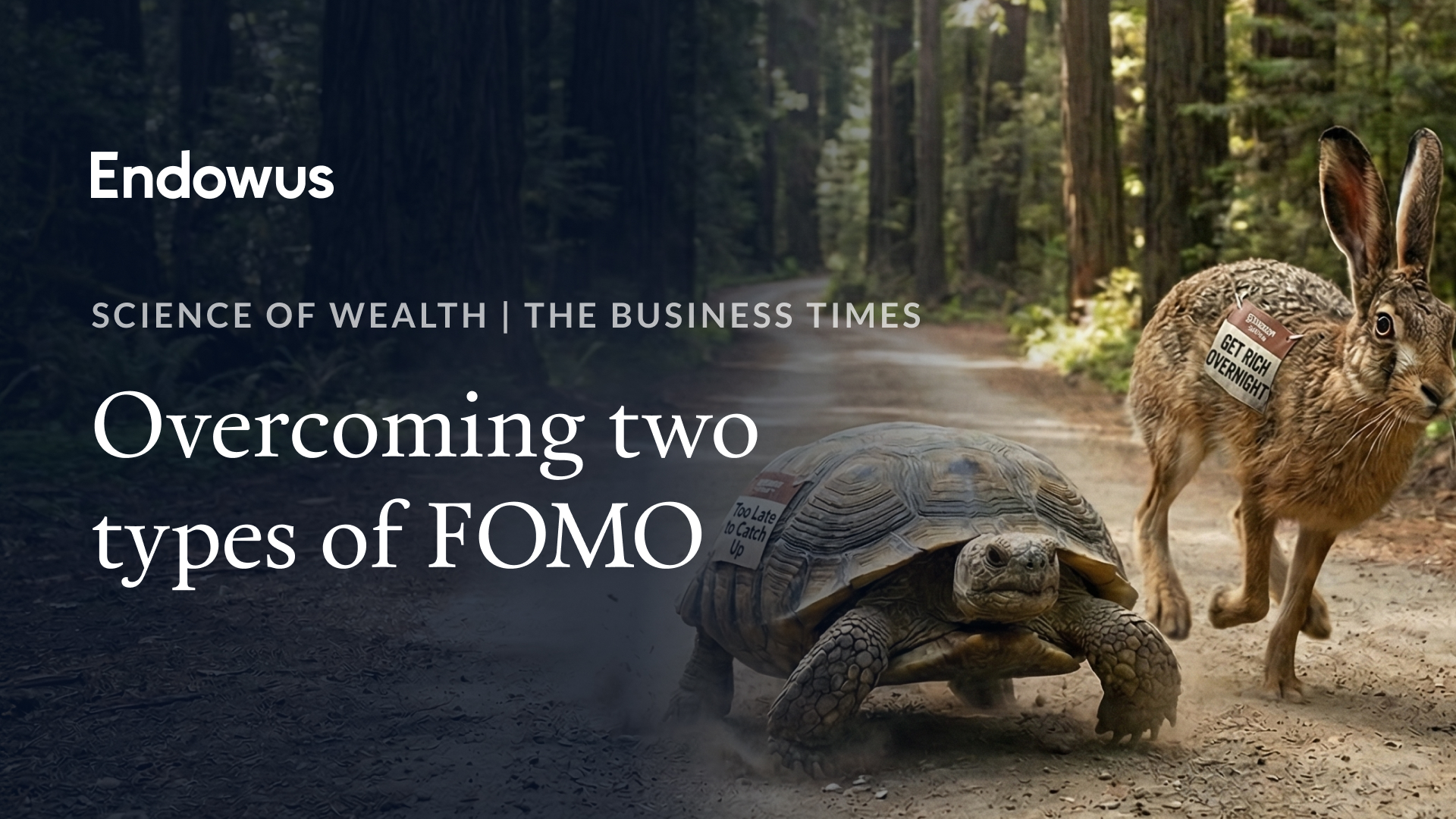Register for the event
Endowus invites you to our exclusive event with Macquarie Asset Management, as we discuss unlocking opportunities in Infrastructure- a $1.3tn asset class.
This event is reserved for Accredited Investors (AIs) only. To register for the event, please indicate one of the following:
As we continue to test global market lows of the year, we need to remind ourselves to reflect on what is noise, what is important, and what is to eventually come true. Rational and evidence-based thinking must prevail over the current frustration.
The original version of this article first appeared in The Business Times.
"Forecasts usually tell us more of the forecaster than of the future."
— Warren Buffett
I had a tough time Googling older articles from the beginning of the year on where the top global banks were predicting the US stocks — represented by the S&P 500 index — to end up at the end of the year.
After clicking past a few pages of search results, I finally managed to find an article published in The New York Times at the end of January when markets were down by 5.3%. Then, many experts called for a rebound of a positive 15% by the end of 2022, or about 40% higher than where we are right now.
Forecasts are just forecasts, and are dangerous to watch closely
Today, looking at more recent forecasts, there are no longer references to those predictions from just nine months ago, as if they never happened. Economists and forecasters now stand by a new set of numbers with new soundbites that extrapolate into headlines all over the world.
There will always be a lot of chatter by "experts" trying to predict where markets will bottom, and whether we are headed for a recession. It should be okay to say "I don’t know".
We do, however, need to remember some fundamentals through all this noise. Markets are forward-looking and are constantly adjusting prices based on the combined perception of market participants — that is, every investor — of the future.
The way markets tend to behave coming into and during a recession proves this exact point.
S&P 500 in recession years
Even if we are headed for a recession, this does not at all mean that stocks are bad.
Markets will always fluctuate, but relative risk-return prevails over time
A lot of people have been asking us if it makes sense to switch their holdings to Singapore Savings Bonds (SSBs) or fixed deposits paying interest rates that are sharply higher than prior years.
To answer this question, you have to remember some fundamentals about the relationship between different types of securities.
Cash gets eaten alive by inflation. SSBs are very safe government bonds — but they do not hedge against surging inflation today. Bonds from corporates and more risky governments are more risky than SSBs, and so must have a higher yield to compensate their holders for taking more risk.
Stocks are riskier than bonds because if a company goes bankrupt, bondholders will be paid back first. If you take more risk, you need more time to get compensated with higher returns.
Best, average, and lowest returns
This year, global stocks are down about 20% and global bonds are down about 12%. If appropriate for your goals, this is an opportunity for investors with a longer runway to invest, average down, dollar-cost average, and stomach the volatility to benefit from higher expected returns with a lower starting point.

Four Rs: responsible, rational, resilient, reasonable
"The stock market is a device to transfer money from the impatient to the patient."
— Warren Buffett
Have a plan that is evidence-based and does not require you to time the market or make forecasts.
Be responsible in understanding your future needs and goals of the money you invest. Every dollar you invest should have a purpose to help you live better in the future.
Invest in rational and resilient portfolios. Depending on how far into the future your goal is and your risk tolerance, decide on strategic passive asset allocations that address each of your goals. Invest in rational and resilient portfolios that are diversified and low-cost with no trailer fees or sales charges eating your investment returns.
What type of portfolio should you invest in?
As a general rule, these portfolios may be suitable for you, depending on your goals and risk tolerance:

Be reasonable about your risk and return expectations. This is no speculation or gambling. This is investing.
Each of your life goals requires you to calibrate your risk appetite to stocks and bonds, and at times, alternatives.
It is very difficult, but do not let frustration and emotion dictate your portfolio decisions. Flying to perceived safety now will hurt your ability to hang on to your purchasing power, and that’s the biggest risk of all.









.webp)




%20(1).gif)
.jpg)





%20F1(2).webp)

.webp)






.webp)